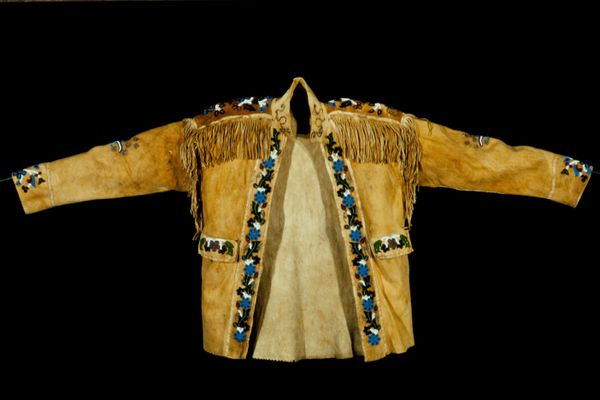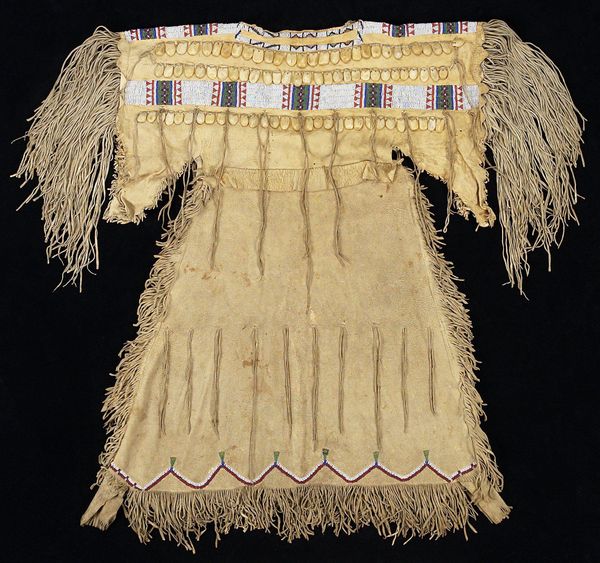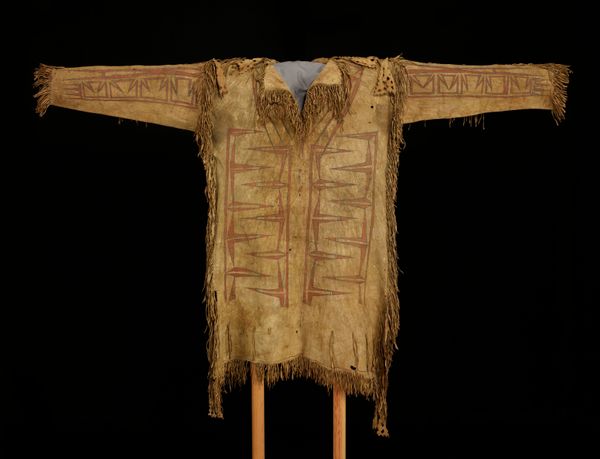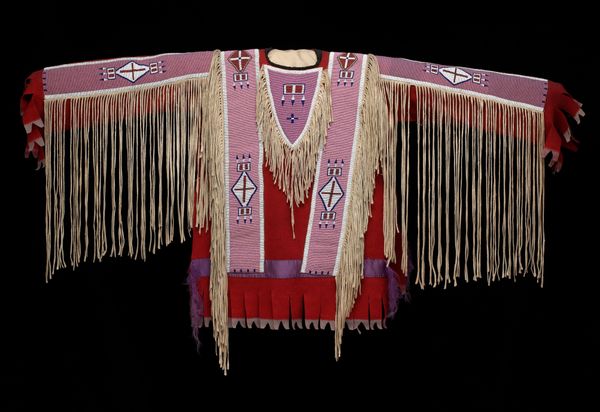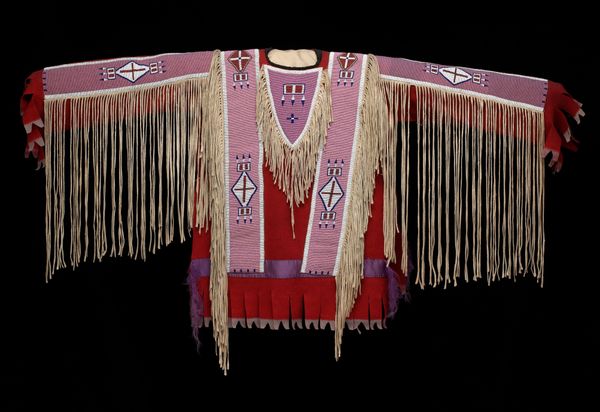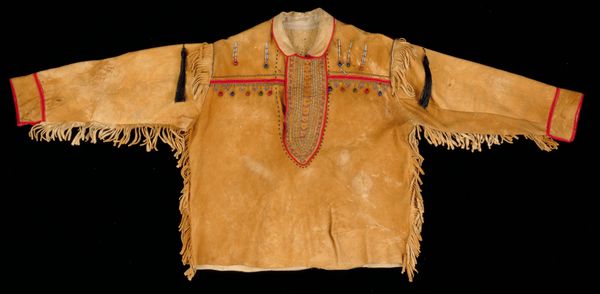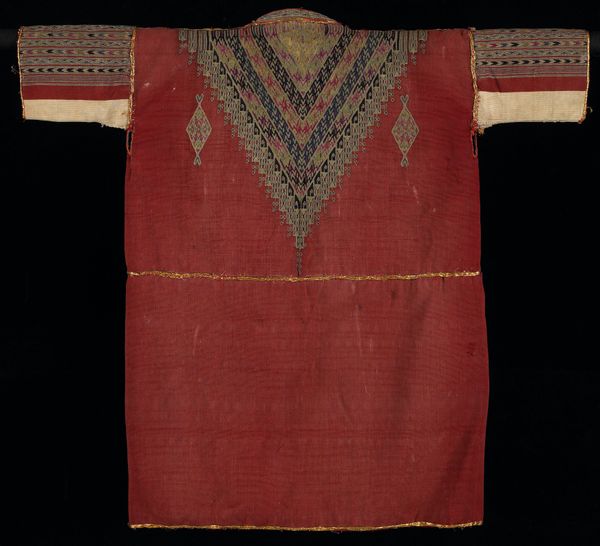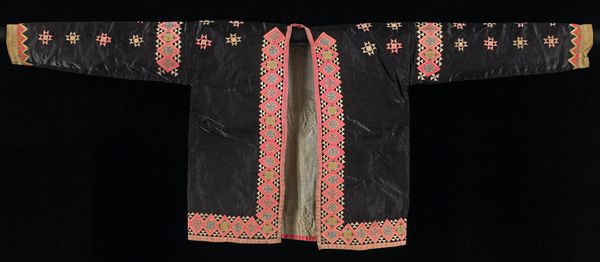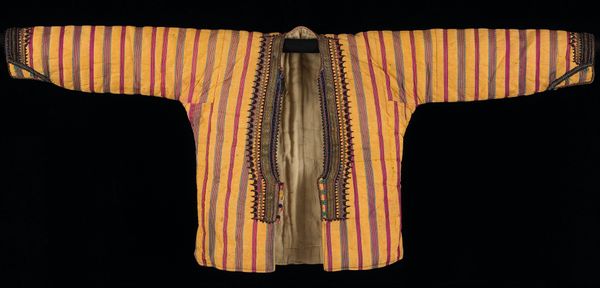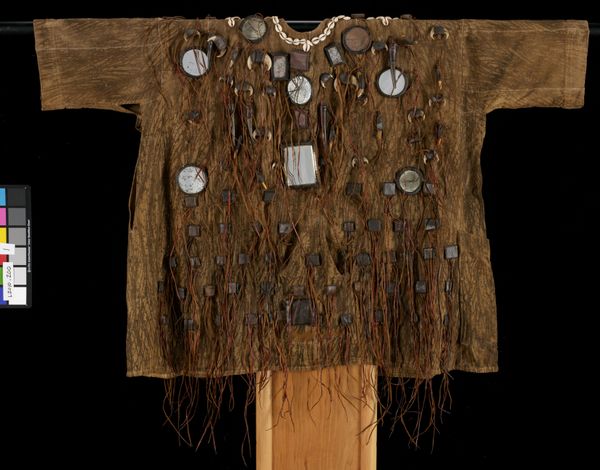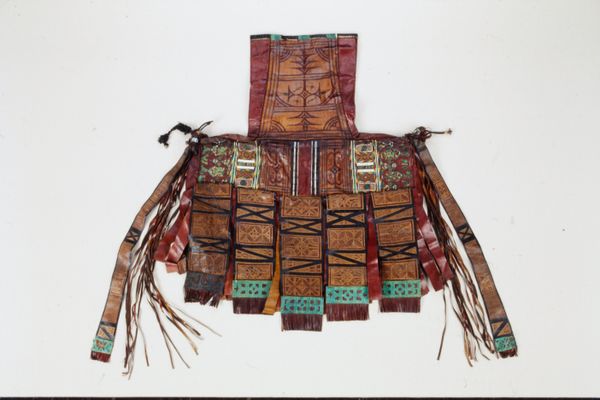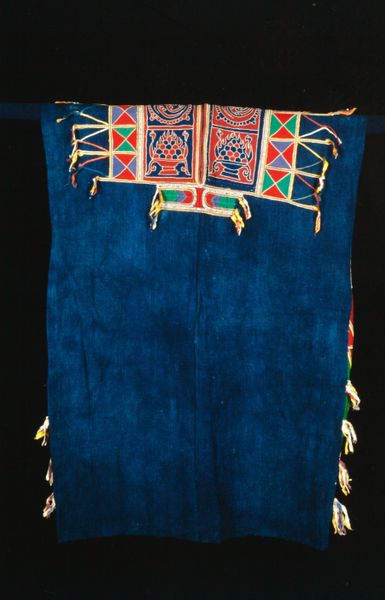
fibre-art, textile
#
fibre-art
#
textile
#
geometric
#
beaded
#
indigenous-americas
Dimensions: approx. 101.6 × 50.8 cm (40 × 20 in.)
Copyright: Public Domain
Curator: The very sight of this garment is powerful. What impressions rise to the surface for you? Editor: It speaks of resilience, certainly. The aged leather and intricate beadwork hint at a history deeply embedded within the community, a symbol loaded with intention. Curator: Precisely. This "War Shirt," dating roughly from 1830 to 1840 and now held by the Art Institute of Chicago, transcends mere clothing. We see elements of fiber art and relief techniques coming together to form this garment. Editor: Yes, the geometric patterns, the stylized horses— they all contribute to the narrative, don't they? The way the glass beads and painted elements are so carefully combined elevates it beyond simple functionality. Do you think the motifs carry specific protective or historical meaning? Curator: Undoubtedly. Consider the symmetry, and those circular medallions. Circles are potent symbols of cyclical time, interconnectedness. This garment probably served as a visible prayer, worn into battle, to harness protection. It reflects cultural continuity as it has passed down imagery. The horse, too, is obviously emblematic – marking not just wealth but also agility, prowess, power on the plains. Editor: Thinking about it displayed here, removed from its original context…do you think that changes its meaning or reception in the contemporary world? A war shirt transformed into a museum piece shifts the power dynamic. We now contemplate conflict from a distance, but are we really grappling with what this symbol continues to represent to Indigenous peoples? Curator: It is absolutely true that exhibiting cultural artifacts prompts ethical dialogues around interpretation, memory, and representation. Here, understanding its material origins – crafted from hide, adorned with pigment and beadwork – reveals that this garment acts as both historical document and visual performance, a convergence that is inherently powerful. Editor: It leaves one with a deep sense of awe and respect for both its symbolic and tactile impact, even if, as a symbol, it's removed from the arena for which it was created. Curator: Yes, and hopefully invites ongoing dialogue, never reducing cultural objects into aesthetic abstractions, but recognizing their role as potent agents for community expression and meaning.
Comments
No comments
Be the first to comment and join the conversation on the ultimate creative platform.
